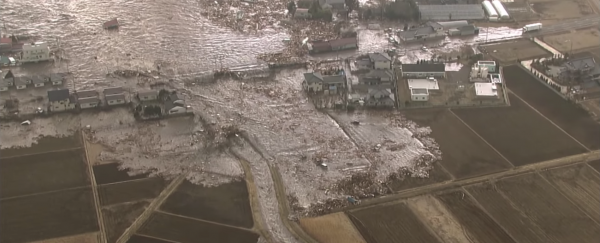
The University of New South Wales (UNSW) in Australia has launched a new YouTube series called Catastrophic Science, which looks into the cutting edge research that's resulted from natural disasters. And in this first episode, they explore how the 2011 Japan tsunami led to a new technique that could save thousands of lives in future.
The tsunami was one of the most devastating natural disasters in recent history, and it made scientists aware that we'd been underestimating how far inland tsunamis could travel. In fact, Japan was one of the best prepared countries in the world for a tsunami, but the water actually came 2 km further then they'd predicted. This is because in the past, scientists had mapped the path of tsunamis only by looking at how far sand was distributed inland.
But UNSW scientists realised after the disaster in 2011 that this sand was only carried 60 percent of the distance of the wave, which meant that all their assessments had been off.
They've now found that there's another, invisible marker that more accurately shows where water has reached - salt. And they've come up with a new technique that will more accurately help to predict the behaviour of tsunamis in the future.
By using technology known as an ITRAX scanner, scientists can now detect the chemical signature of salt in core samples around the world. As you can see in the video above, using this technique, they can look at two identical samples of soil from Japan that were collected just 2 metres apart, and show that one is 100 times saltier than the other. This represents the line where the tsunami finally started to retreat.
Now they're using this same technique to assess core soil samples collected around the world, to work out whether the region has ever been affected by a tsunami. This will help them predict the damage caused by these natural disasters in the future, but could also reveal new areas that are at risk. Best of all, it could help save thousands of lives by better forward planning.
Watch the episode above to find out more about the new technique, and don't forget to subscribe to see new episodes as they're released.
Love science? Find out more about the world-leading research happening at UNSW Science.
